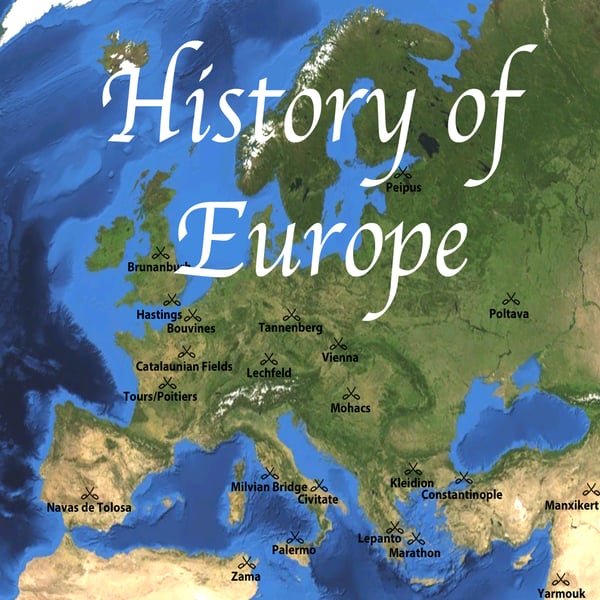62.1 Seven Years War 1756-63, Part 1
A History of Europe, Key Battles
Carl Rylett
4.4 • 756 Ratings
🗓️ 17 September 2021
⏱️ 21 minutes
🧾️ Download transcript
Summary
Seven Years War 1756-63, Part 1
Pictured - Frederick the Great
www.historyeurope.net
Music - Joseph Haydn, Symphony 49 'The Passion', courtesy of www.musopen.org
Hosted on Acast. See acast.com/privacy for more information.
Transcript
Click on a timestamp to play from that location
| 0:00.0 | The |
| 0:07.0 | The Hello and welcome to a History of Europe Kibattles podcast. |
| 0:30.6 | This is the Seven Years' War of 1756 to 1763, part one. |
| 0:46.3 | In late August 1756, the 29th, to be exact, a large blue-coated Prussian invasion force crossed their frontier into the neighbouring German state of Saxony. |
| 1:00.0 | They marched in three columns. On the right were about 15,000 men, on the left were 18,000 men, and in the centre was King Frederick II, commanding a corps of 30,000 men and in the centre was King Frederick II, combining a corps of 30,000 troops. |
| 1:15.7 | Frederick had earned himself the sobriquet the great eight years previously, after the conclusion |
| 1:21.3 | of the war of the Austrian succession 1740 to 48. He had made a great impression across Europe with his superb tactical skills, |
| 1:31.3 | and his army was famous for its discipline and excellent organisation. However, although the |
| 1:37.3 | conquest of Silesia had been successful militarily, his unprovoked attack had caused great resentment across Europe, |
| 1:46.5 | especially to the Habsburg Queen Maria Theresa in Vienna, who vowed to one day recover her lost |
| 1:53.3 | province. |
| 1:56.9 | The invasion of Saxony, on the surface, appeared in a similar vein, an unprovoked attack which triggered another major conflict, but was Frederick justified in his action? |
| 2:08.6 | So consider this question, we should go back eight years. |
| 2:14.6 | The Treaty of Ila-Chapel of October 1748, which ended the War of the Austrian Succession, |
| 2:22.3 | had done nothing to assuage the anger of Austria over the loss of Silesia, nor had it been able to contain the conflicting colonial ambitions of France and Britain in North America, the Caribbean and India. |
| 2:37.6 | These were to prove the major drivers for continuing instability. |
| 2:46.6 | The Seven Years' War, which began with Prussia's invasion of Saxony in 1756, is sometimes seen as actually two separate conflicts. |
| 2:57.3 | The Americans call it the French and Indian War, while Germans generally refer to the Third Sardesian War. |
| 3:04.9 | The previous two Sardisan Wars, both taking place during the war of the Austrian succession. |
| 3:11.8 | Since this is a history of Europe, I will focus on the Sidesian conflict, but also reference the main points of the wider colonial conflict. |
| 3:26.3 | As well as Prussia, the other rising power of the continent was Russia. |
| 3:31.5 | After a period of internal instability after the death of Peter the Great, |
... |
Please login to see the full transcript.
Disclaimer: The podcast and artwork embedded on this page are from Carl Rylett, and are the property of its owner and not affiliated with or endorsed by Tapesearch.
Generated transcripts are the property of Carl Rylett and are distributed freely under the Fair Use doctrine. Transcripts generated by Tapesearch are not guaranteed to be accurate.
Copyright © Tapesearch 2025.

